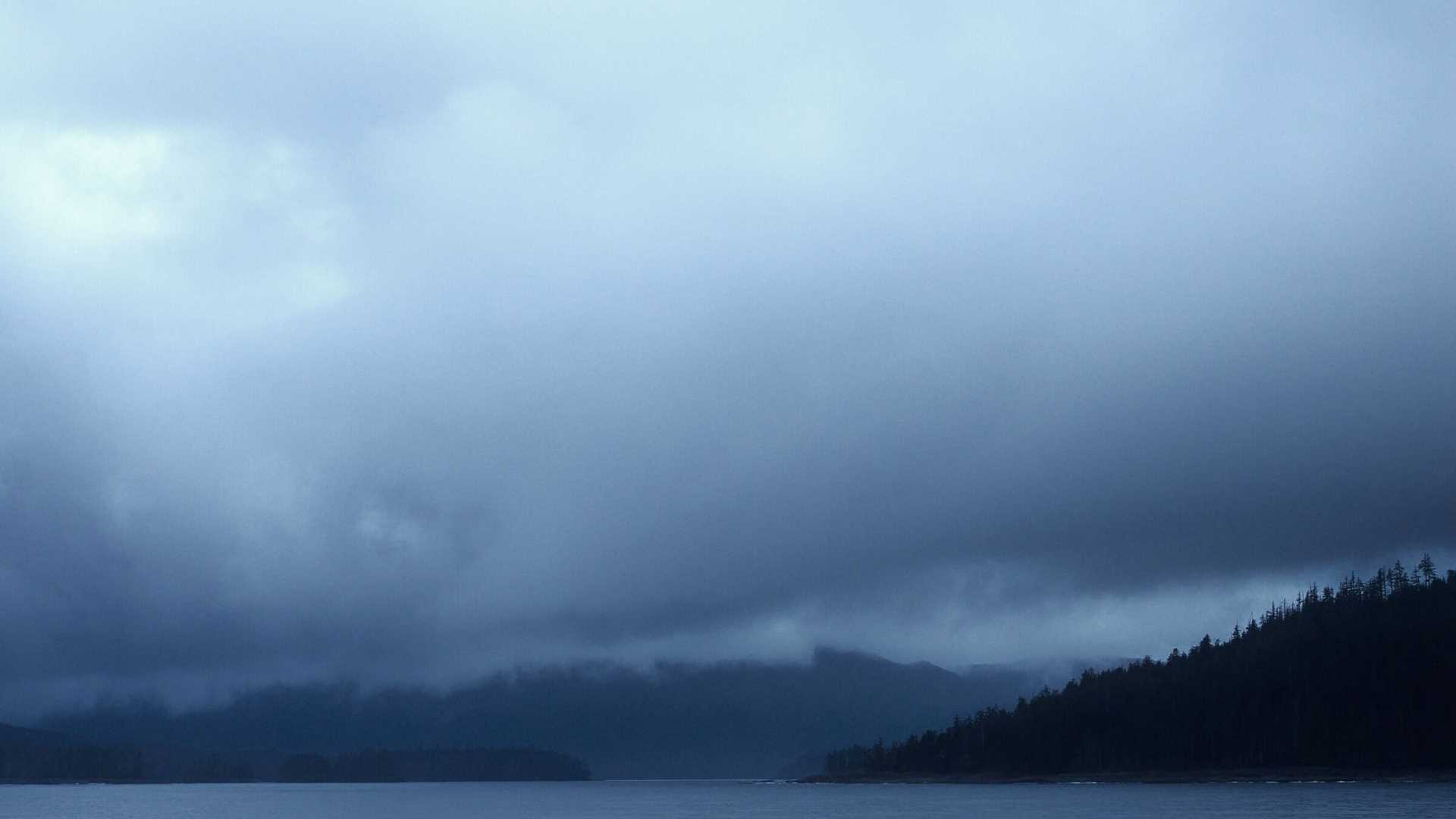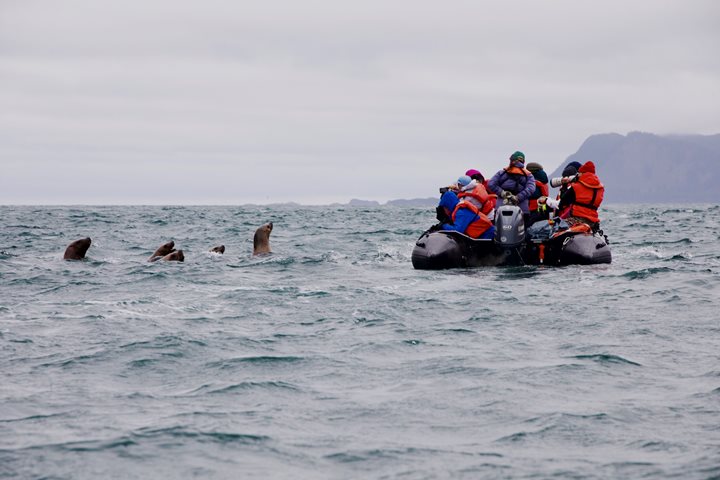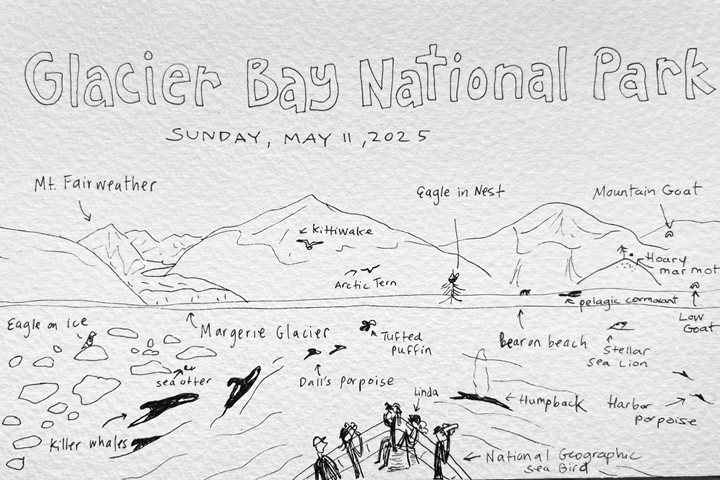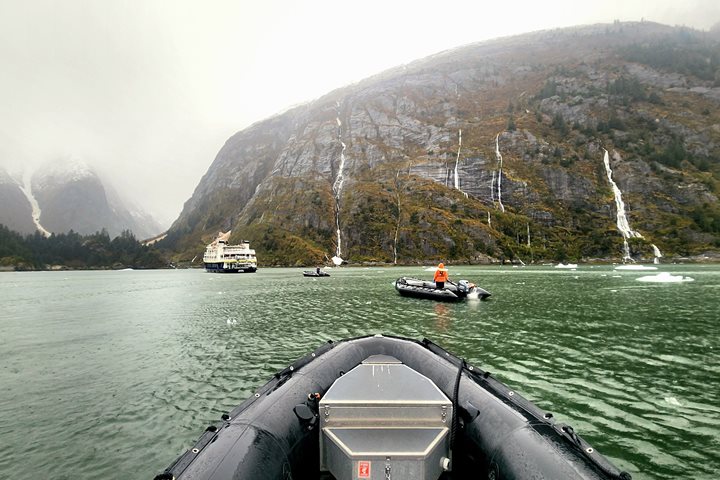Steaming southward, we rolled with the seas throughout the night. As morning twilight began to brighten the clouded skies, National Geographic Sea Lion slipped into protected waters. Our small ship nimbly wove through braided channels toward our destination.
SGang Gwaay is one of the highlights of a visit to Haida Gwaii. From day one we have anticipated this destination, so we were thrilled that the weather lined up to make a visit possible. Haida Watchmen guided our time ashore, taking us through the magnificent forests and showing us ancient totems facing the sea. While the village here is no longer inhabited year-round, what still stands is part of a UNESCO World Heritage site.
Such an incredible location deserves a full day. For our afternoon some of us went ashore, while others explored the islets via Zodiac. Lush forests of kelp blanketed much of the water’s surface, providing a healthy habitat to foster a robust marine ecosystem. Feeding on that system was a suite of marine predators that dotted the land at the ocean’s edge. Pelagic cormorants darted about, lining up on rocks where gulls loafed and seals rested.
The health and power of SGang Gwaay was impossible to ignore. The ocean is productive, the forest is massive, and the people who steward this environment have a rich and ongoing history. The privilege we hold in visiting this place is to be cherished.







